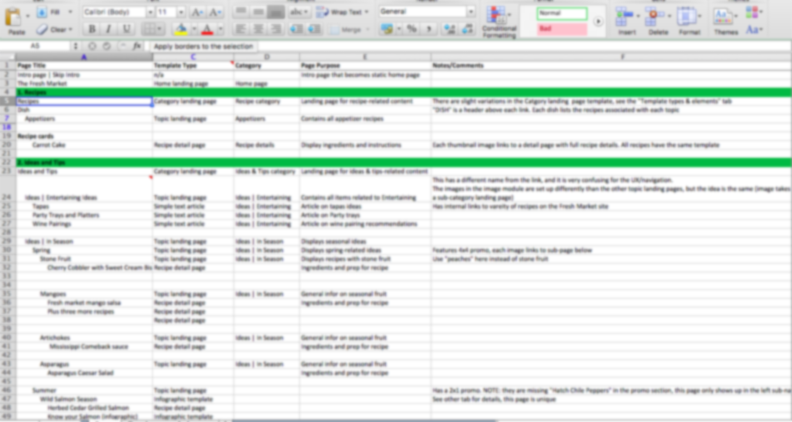
There’s a headline I never, ever thought I’d write. Never heard of a content audit? It’s just what you’re picturing: Someone (or several someones) goes though a live site, link-by-link, to see how much content’s there, and how good that content is. Along the way the auditor keeps track of the findings in a fabulous, detailed spreadsheet.
Thanks to my content strategy experience, hearing about a content audit opportunity brings a tiny thrill to my inner content nerd. Why?
It’s fun!
Honest—there’s no better way to dig into a brand’s digital life and see what’s going on.
Sites are developed and maintained in an ever-evolving, iterative process. A content audit is one of the few projects where you take some time to look at how the whole thing’s grooving along as a unit.
The end results are fascinating. Once you’ve gone through everything, you end up with a gold mine of information about the site: You’ll see how pages look, hear how the brand voice sounds, and so much more. It also shows you how your site stacks up to your competition: Where do you stand out? What can you improve? I’m telling you, it’s days and weeks of fun.
I’ve done audits solo and as a member of a user experience team. No matter how the project’s organized, my process is pretty much the same. I pretend I’m a member of the site’s intended audience, grab some coffee, and take a spin through the digital experience.
As I surf the site in my adopted “secret shopper” mindset I look for all kinds of things. Is the content conversational or clunky? Are there any broken links or missing images—and where do the call to action buttons take me? Do products have different names on different pages? And the biggest of all: Where is the Oxford comma?? (Full disclosure: I’m a fan. But if the client isn’t, I let it go.)
At Razorfish I was a team member of an audit that took several weeks, and though the work was hard and left me loopy at times, it was incredibly rewarding (AND it finally got me to like Excel). We were lucky enough to have traffic stats and helpfulness ratings on the pages we were auditing, and that information gave us insight into how the content was performing. My colleague discovered incorrect information on the pages she audited, and I discovered duplicative content in several sections. Presenting this information to the client gave them a sense of what needed to be updated sooner rather than later, and served as a compass for future improvements.
When’s the best time for an audit?
If you’re doing any re-branding or have a site re-launch on the horizon, an audit is a great way to see what content needs to be created, updated, or retired. Any time your content isn’t performing that well—it might not generate a lot of traffic, and isn’t delivering the leads or downloads you want—consider an audit. Your “secret shopper eyes” will see things you didn’t notice before, and give you insight into the concrete actions you can take to improve your content.
I think any site can benefit from an audit.
For the record, I audited my own site before it got this fabulous, looooong-overdue makeover. It didn’t have thousands of pages and assets, but it had more than enough to warrant a critical eye—my own. It took some time, but I am thrilled with the results. Need help with an audit? Let me know. Happy audit season!